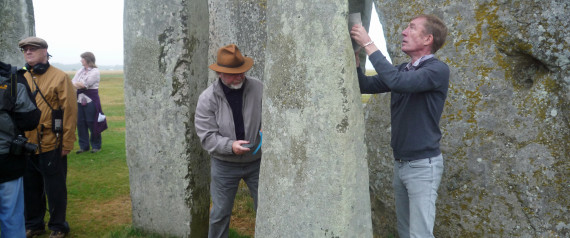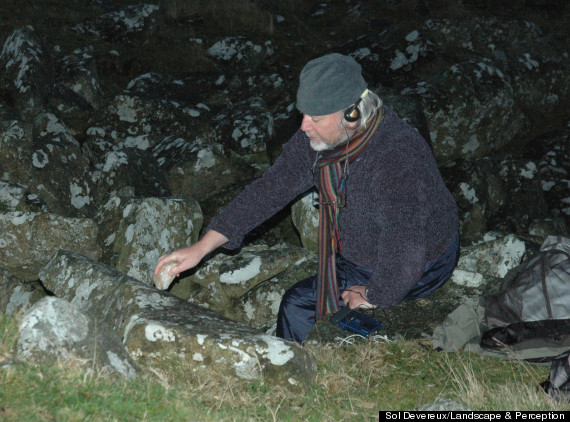Huff Post does a good job catching the Science News, which I love and don't always get a chance to check on...the books I am reading now lead into this new theory....hope to get reviews up soon, will try to do before Christmas in case you have an interest in gifting....
'Rainbow Gravity' Theory Says Our Universe Has No Beginning
 | By Clara Moskowitz
Posted: 12/10/2013 8:42 am EST | Updated: 12/11/2013 1:46 pm EST
| By Clara Moskowitz
Posted: 12/10/2013 8:42 am EST | Updated: 12/11/2013 1:46 pm EST
What if the universe had no beginning, and time stretched back infinitely without a big bang to start things off? That's one possible consequence of an idea called "rainbow gravity," so-named because it posits that gravity's effects on spacetime are felt differently by different wavelengths of light, aka different colors in the rainbow.
Rainbow gravity was first proposed 10 years ago as a possible step toward repairing the rifts between the theories of general relativity (covering the very big) and quantum mechanics (concerning the realm of the very small). The idea is not a complete theory for describing quantum effects on gravity, and is not widely accepted. Nevertheless, physicists have now applied the concept to the question of how the universe began, and found that if rainbow gravity is correct, spacetime may have a drastically different origin story than the widely accepted picture of the big bang.
According to Einstein's general relativity, massive objects warp spacetime so that anything traveling through it, including light, takes a curving path. Standard physics says this path shouldn't depend on the energy of the particles moving through spacetime, but in rainbow gravity, it does. "Particles with different energies will actually see different spacetimes, different gravitational fields," says Adel Awad of the Center for Theoretical Physics at Zewail City of Science and Technology in Egypt, who led the new research, published in October in the Journal of Cosmology and Astroparticle Physics. The color of light is determined by its frequency, and because different frequencies correspond to different energies, light particles (photons) of different colors would travel on slightly different paths though spacetime, according to their energy.
The effects would usually be tiny, so that we wouldn't notice the difference in most observations of stars, galaxies and other cosmic phenomena. But with extreme energies, in the case of particles emitted by stellar explosions called gamma-ray bursts, for instance, the change might be detectable. In such situations photons of different wavelengths released by the same gamma-ray burst would reach Earth at slightly different times, after traveling somewhat altered courses through billions of light-years of time and space. "So far we have no conclusive evidence that this is going on," says Giovanni Amelino-Camelia, a physicist at the Sapienza University of Rome who has researched the possibility of such signals. Modern observatories, however, are just now gaining the sensitivity needed to measure these effects, and should improve in coming years.
The extreme energies needed to bring out strong consequences from rainbow gravity, although rare now, were dominant in the dense early universe, and could mean things got started in a radically different fashion than we tend to think. Awad and his colleagues found two possible beginnings to the universe based on slightly different interpretations of the ramifications of rainbow gravity. In one scenario, if you retrace time backward, the universe gets denser and denser, approaching an infinite density but never quite reaching it. In the other picture the universe reaches an extremely high, but finite, density as you look back in time and then plateaus. In neither case is there a singularity—a point in time when the universe is infinitely dense—or in other words, a big bang. "This was, of course, an interesting result, because in most cosmological models, we have singularities," Awad says. The result suggests perhaps the universe had no beginning at all, and that time can be traced back infinitely far.
Whereas it is too soon to know if these scenarios might describe the truth, they are intriguing. "This paper and a few other papers show there could be a rightful place in cosmology for this idea [of rainbow gravity], which is encouraging to me," says Amelino-Camelia, who was not involved in the study, but has researched frameworks for pursuing a quantum theory of gravity. "In quantum gravity we are finding more and more examples where there is this feature which you may call rainbow gravity. It is something that is increasingly compelling."
Yet the concept has its critics. "It's a model that I do not believe has anything to do with reality," says Sabine Hossenfelder of the Nordic Institute for Theoretical Physics. This idea is not the only way to do away with the big bang singularity, she adds. "The problem isn't to remove the singularity, the problem is to modify general relativity in a consistent way, so that one still reproduces all its achievements and that of the Standard Model [of particle physics] in addition."
Lee Smolin of the Perimeter Institute for Theoretical Physics in Ontario, who first suggested the idea of rainbow gravity along with Joao Magueijo of Imperial College London, says that, in his mind, rainbow gravity has been subsumed in a larger idea called relative locality. According to relative locality, observers in different locations across spacetime will not agree on where events take place—in other words, location is relative. "Relative locality is a deeper way of understanding the same idea" as rainbow gravity, Smolin says. The new paper by Awad and his colleagues "is interesting," he adds, "but before really believing the result, I would want to redo it within the framework of relative locality. There are going to be problems with locality the way it's written that the authors might not be aware of."
In the coming years researchers hope to analyze gamma-ray bursts and other cosmic phenomena for signs of rainbow gravity effects. If they are found, it could mean the universe has a more "colorful" history than we knew.
Rainbow gravity was first proposed 10 years ago as a possible step toward repairing the rifts between the theories of general relativity (covering the very big) and quantum mechanics (concerning the realm of the very small). The idea is not a complete theory for describing quantum effects on gravity, and is not widely accepted. Nevertheless, physicists have now applied the concept to the question of how the universe began, and found that if rainbow gravity is correct, spacetime may have a drastically different origin story than the widely accepted picture of the big bang.
According to Einstein's general relativity, massive objects warp spacetime so that anything traveling through it, including light, takes a curving path. Standard physics says this path shouldn't depend on the energy of the particles moving through spacetime, but in rainbow gravity, it does. "Particles with different energies will actually see different spacetimes, different gravitational fields," says Adel Awad of the Center for Theoretical Physics at Zewail City of Science and Technology in Egypt, who led the new research, published in October in the Journal of Cosmology and Astroparticle Physics. The color of light is determined by its frequency, and because different frequencies correspond to different energies, light particles (photons) of different colors would travel on slightly different paths though spacetime, according to their energy.
The effects would usually be tiny, so that we wouldn't notice the difference in most observations of stars, galaxies and other cosmic phenomena. But with extreme energies, in the case of particles emitted by stellar explosions called gamma-ray bursts, for instance, the change might be detectable. In such situations photons of different wavelengths released by the same gamma-ray burst would reach Earth at slightly different times, after traveling somewhat altered courses through billions of light-years of time and space. "So far we have no conclusive evidence that this is going on," says Giovanni Amelino-Camelia, a physicist at the Sapienza University of Rome who has researched the possibility of such signals. Modern observatories, however, are just now gaining the sensitivity needed to measure these effects, and should improve in coming years.
The extreme energies needed to bring out strong consequences from rainbow gravity, although rare now, were dominant in the dense early universe, and could mean things got started in a radically different fashion than we tend to think. Awad and his colleagues found two possible beginnings to the universe based on slightly different interpretations of the ramifications of rainbow gravity. In one scenario, if you retrace time backward, the universe gets denser and denser, approaching an infinite density but never quite reaching it. In the other picture the universe reaches an extremely high, but finite, density as you look back in time and then plateaus. In neither case is there a singularity—a point in time when the universe is infinitely dense—or in other words, a big bang. "This was, of course, an interesting result, because in most cosmological models, we have singularities," Awad says. The result suggests perhaps the universe had no beginning at all, and that time can be traced back infinitely far.
Whereas it is too soon to know if these scenarios might describe the truth, they are intriguing. "This paper and a few other papers show there could be a rightful place in cosmology for this idea [of rainbow gravity], which is encouraging to me," says Amelino-Camelia, who was not involved in the study, but has researched frameworks for pursuing a quantum theory of gravity. "In quantum gravity we are finding more and more examples where there is this feature which you may call rainbow gravity. It is something that is increasingly compelling."
Yet the concept has its critics. "It's a model that I do not believe has anything to do with reality," says Sabine Hossenfelder of the Nordic Institute for Theoretical Physics. This idea is not the only way to do away with the big bang singularity, she adds. "The problem isn't to remove the singularity, the problem is to modify general relativity in a consistent way, so that one still reproduces all its achievements and that of the Standard Model [of particle physics] in addition."
In the coming years researchers hope to analyze gamma-ray bursts and other cosmic phenomena for signs of rainbow gravity effects. If they are found, it could mean the universe has a more "colorful" history than we knew.







